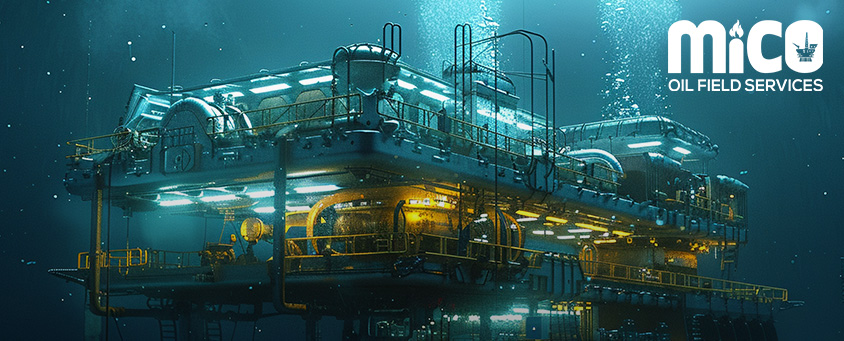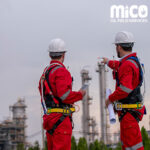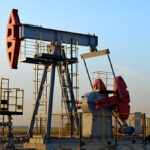Subsea engineering is transforming the oil and gas industry by enabling efficient exploration and production from previously unreachable underwater reserves. As oil companies venture deeper into the ocean, they face increasingly complex challenges, including extreme pressure, harsh environmental conditions, and the need for safe, sustainable practices. To overcome these obstacles, innovations in subsea technology have become indispensable.
The Technological Leap
Recent advancements in subsea technology are redefining the possibilities for oil and gas exploration. Subsea production systems, such as control systems, umbilicals, risers, and flowlines (SURF), are critical for deep-sea operations. These systems ensure that oil and gas are safely extracted and transported from the seabed to surface facilities. Subsea boosting and compression systems, in particular, have shown promise in enhancing oil recovery and prolonging the life of fields. By enabling the extraction of hydrocarbons from extreme depths, these systems reduce the need for more traditional, surface-based infrastructure.
One of the most significant innovations in this space is the development of 20,000-psi subsea systems. These high-pressure, high-temperature (HPHT) solutions are designed to withstand the extreme environments found in ultra-deepwater fields like those in the Gulf of Mexico. By integrating subsea control modules with multiphase pumping systems, engineers have managed to reduce operational complexity, improve safety, and extend the life of offshore oilfields.

Subsea Engineering Automation and Robotics
The introduction of autonomous underwater vehicles (AUVs) and subsea robotics has further revolutionized the industry. These systems perform tasks such as pipeline inspection, maintenance, and repair without human intervention, significantly reducing operational risks and costs. AUVs are now used to monitor installations, providing real-time data on the integrity of pipelines and equipment. This minimizes the risk of environmental disasters and allows for predictive maintenance.
Environmental Considerations for Subsea Engineering
As the world becomes more focused on environmental sustainability, subsea engineering must also adapt. Technologies that reduce carbon emissions and improve energy efficiency are in high demand. Subsea separation and compression technologies, for instance, help minimize the environmental footprint by reducing the need for surface processing and energy consumption.
Future Trends
Looking ahead, long-distance subsea power transmission and enhanced oil recovery (EOR) systems are poised to further shape the industry. These systems allow operators to extend the reach of subsea fields while ensuring that the energy used to power equipment under sea is as efficient as possible. With the integration of digitalization and advanced monitoring, future operations will likely be more automated and data-driven, increasing both safety and efficiency.

In conclusion, innovations in subsea engineering are essential to the future of oil and gas exploration. As companies continue to push the boundaries of what is possible beneath the waves, the industry must balance the pursuit of energy resources with the need for environmental responsibility and operational safety.
Current Landscape of Subsea Engineering
The subsea sector is an essential part of the global oil and gas supply chain, allowing access to offshore reserves that would otherwise be unreachable. Global offshore oil production accounts for about 30% of the world’s total oil output, with regions like the North Sea, Gulf of Mexico, and Brazil contributing significantly. Companies like Al Manazel Integrated Co. L.L.C. are at the forefront, providing services that include well intervention, pipeline services, and artificial lifting.
Key Innovations Driving Efficiency
- Subsea Processing Systems: One of the most notable advances in recent years is subsea processing, where critical tasks such as separation, compression, and boosting are handled directly on the seabed. This eliminates the need for topside facilities, reducing costs and enhancing efficiency. These systems, like those provided by Al Manazel Integrated Co., offer a more streamlined and cost-effective approach for maintaining offshore production.
- Autonomous Underwater Vehicles (AUVs) and Robotics: AUVs and remotely operated vehicles (ROVs) have become indispensable tools for exploration and maintenance. These devices can perform a variety of tasks, from inspecting pipelines to deploying repair equipment, in extreme conditions where human intervention is impossible. The integration of AI in these systems allows them to make real-time decisions, reducing human error and response time.
- Advanced Materials and Coatings: As subsea systems face extreme pressure, corrosion, and erosion, innovations in materials are essential. New composite materials and anti-corrosion coatings have increased the lifespan of equipment, reducing the frequency of maintenance. Companies are also exploring the use of flexible pipes made from durable polymers, which can better withstand the harsh environment.
- Digitalization and Monitoring: Digital twins and real-time monitoring are revolutionizing how operators manage the assets. These virtual models replicate the physical infrastructure, allowing for predictive maintenance and reducing downtime. Sensors embedded in subsea systems collect data, feeding it into AI-driven platforms that analyze equipment health, optimizing performance.
Enhancing Sustainability in Subsea Exploration
Subsea engineering is also helping the oil and gas industry meet its sustainability goals. Technologies like carbon capture and storage (CCS) and underwater power generation are being integrated into subsea operations to reduce the carbon footprint. Moreover, hybrid solutions, powered by renewable energy sources such as offshore wind, are gaining traction as part of a greener offshore future.
Challenges and Future Outlook
Despite its potential, subsea engineering faces several challenges. The high initial costs and technical complexities of deploying advanced subsea technologies are often prohibitive. Additionally, as exploration ventures into deeper waters, maintaining reliable communications and ensuring equipment integrity becomes increasingly difficult.

However, the future of subsea engineering looks promising. With continuous advancements in AI, robotics, and material science, the industry is poised for more breakthroughs. Collaborative efforts between technology providers and energy companies, such as the work done by Al Manazel Integrated Co., are essential for pushing the boundaries of what’s possible beneath the waves.
Discussion
The advancements in engineering are reshaping the oil and gas sector, enhancing both efficiency and sustainability. From subsea processing to the use of advanced robotics, these innovations are helping operators access previously unreachable reserves. At the same time, challenges such as cost and environmental impact remain, necessitating ongoing innovation and collaboration. As companies like Al Manazel Integrated Co. continue to pioneer in this space, the future of subsea exploration holds vast potential for transforming the industry.









